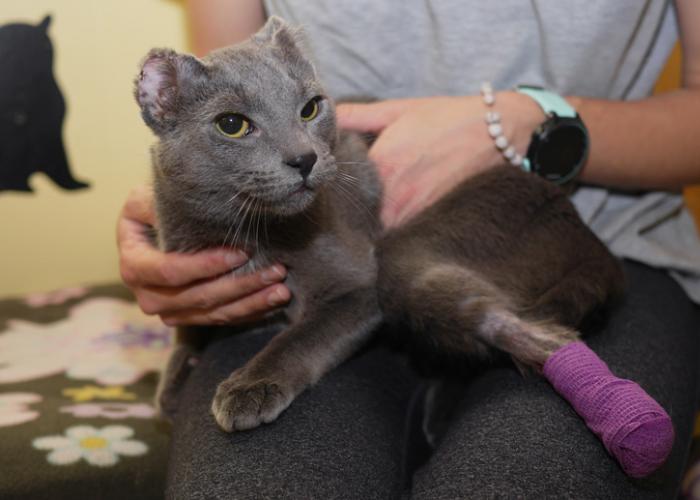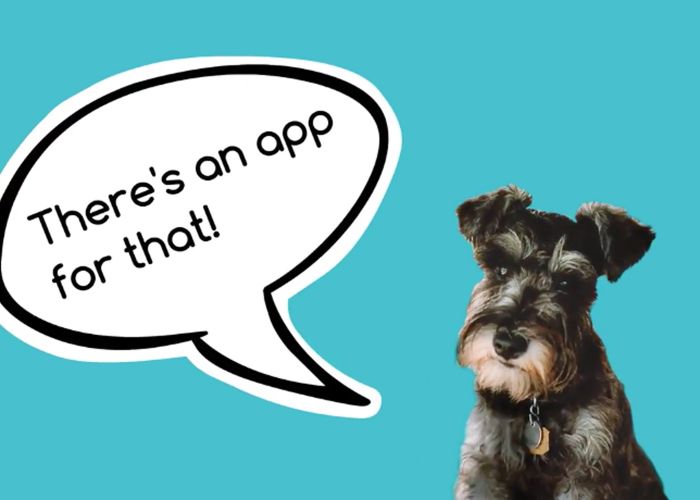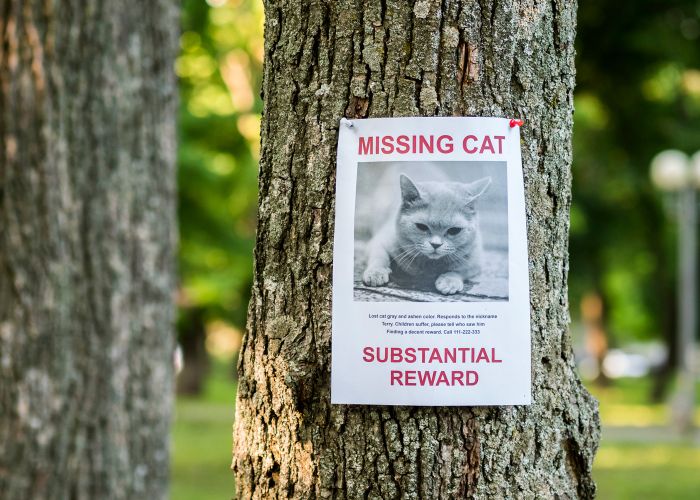All in the family
Human and animal welfare organizations take a holistic approach to helping pets and people
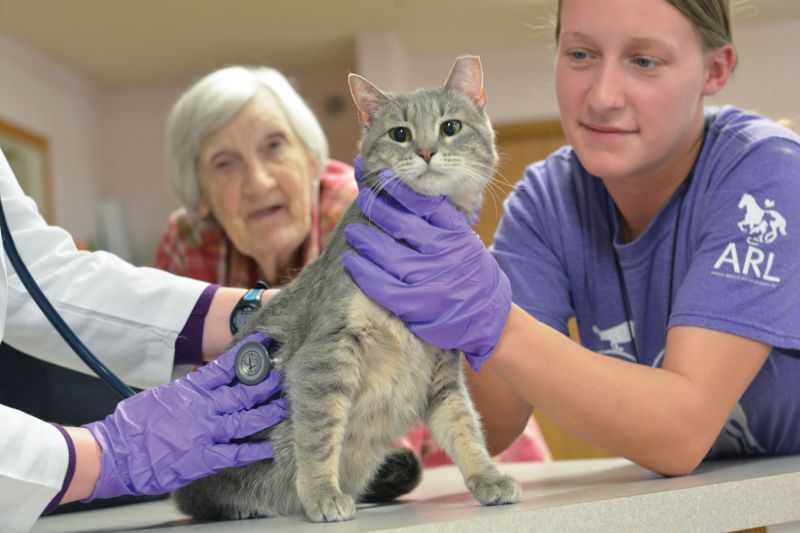
The woman desperately needed to get out of her house and away from her abuser. But she couldn’t stand the thought of leaving her dogs with someone who might hurt them. She’d had her three big dogs since they were puppies, and they’d gotten her through some really tough times. In tears, she called the Animal Rescue League (ARL) of Iowa and asked how to surrender them.
Kim Wolf, community outreach coordinator for the Des Moines shelter, offered a better option: Her dogs could stay in an ARL crisis foster home until she got on her feet.
The conversation didn’t end there; it was clear to Wolf that the woman needed more than a solution for her pets. Contacting the shelter had been her first step to escaping the violence at home. “She didn’t know how to begin,” Wolf says, “because she’s still living with the abuser.”
Wolf connected her to Children & Families of Iowa, a nonprofit that coached her through the process of leaving her home and provided transitional housing and counseling. Wolf arranged foster care for the dogs and communicated with the woman’s case manager to keep tabs on her progress. A month later, the woman found an affordable long-term rental and was able to reclaim her dogs.
Since joining the staff at ARL last year, Wolf has worked with Children & Families of Iowa on dozens of similar cases. It’s a partnership that enables both organizations to better fulfill their missions, she says. The human service agency wants to help domestic violence victims escape their batterers; the shelter wants to keep pets with their families. Without a safe place for their pets, people are less likely to leave an abuser. Without the assistance that helps them rebuild their lives in other ways, they may never be able to reclaim them.
Wolf spent her early career as a case manager for social service agencies, where she witnessed the myriad ways peoples’ lives can unravel. At the ARL, she sees how those same scenarios trickle down to impact the family pets. In any given week, she hears about job losses and evictions, addiction and mental illness, physical disabilities and unexpected illnesses, family violence and financial upheavals.
The animal shelter is often her clients’ first point of contact, she says, because people tend to “think of their pets first.”
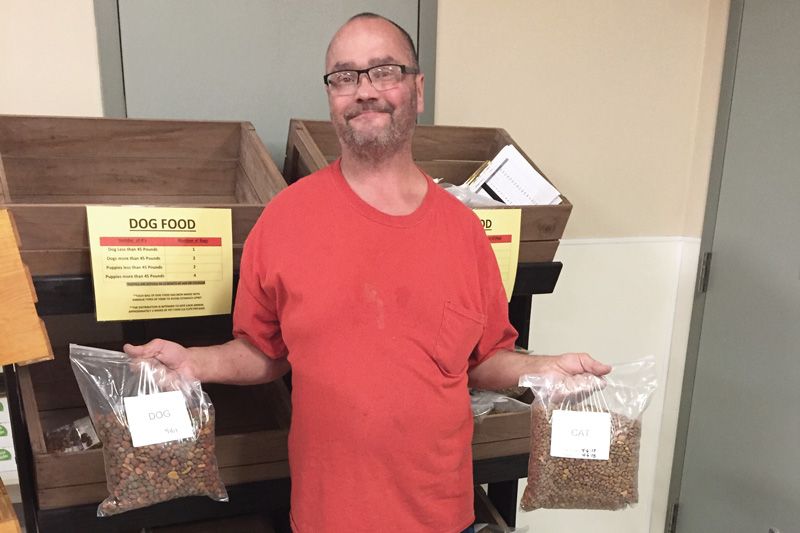
To meet their needs, Wolf has expanded the ARL’s partnerships with a variety of human-focused nonprofits, including the local Red Cross, the YMCA, food assistance programs and organizations that serve people who are homeless, disabled or elderly.
And she’s witnessing more successful interventions as a result. In ARL’s crisis foster program, for example, the vast majority of pets are eventually reunited with their owners, and the amount of time they spend in foster care has decreased.
“It’s just such a natural fit,” she says of these partnerships. “Pets can’t exist without people, and many people can’t exist without their pets. We can provide the pet care, but if it’s not done in concert with taking care of the human, then we’re still going to have an unstable situation.”
Building bridges
An increasing number of animal and human welfare organizations are reaching that same conclusion, says Jenny Coffey, a licensed clinical social worker who works for Animal Haven, a shelter in New York City.
A decade ago, when Coffey first entered the animal welfare field after years of working in human services, she was surprised to find that the two sectors “were so independent” of each other. In her job developing a surrender prevention program for the Mayor’s Alliance for NYC’s Animals, she would walk through city shelters and see large numbers of owner-surrendered pets. She suspected that behind each one there was a family who might have been able to keep their companion with the right combination of services.
While the city’s animal and human service nonprofits were frequently serving—or attempting to engage—the same people, they didn’t know each other. Faced with inadequate resources and overwhelming need, staff in both fields were wary of mission creep. They tended to hunker down and focus on either the animals or the humans.
Coffey saw that attitude at play in one of her early cases when she visited the home of an animal hoarder. “The social worker was there, and he looked at me and said, ‘You deal with the animals; I deal with the person.’” Coffey responded: “It’s actually something we have to work at together.”
Gradually, Coffey began to introduce a different mindset and build bridges between the two camps.
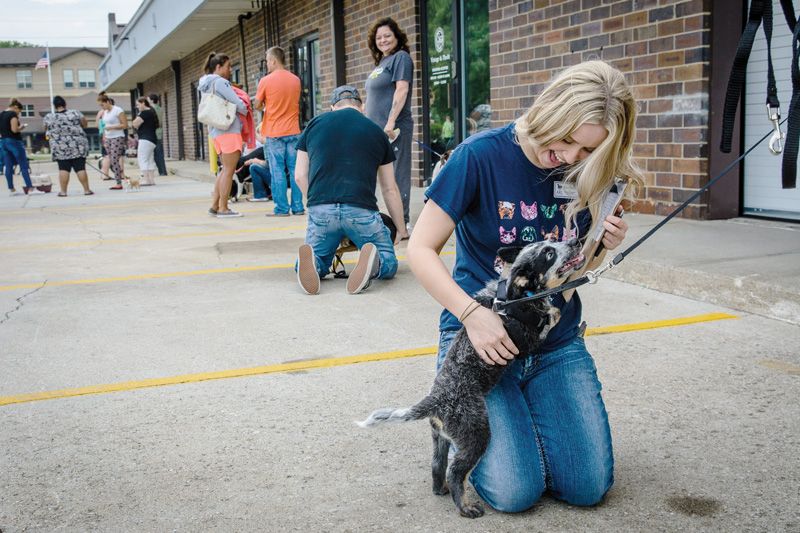
During presentations to social workers, she explained how they could use animals to connect with their owners and facilitate the delivery of human services. She described how interventions that didn’t account for pets often failed. “The animals are more than just animals,” she told them. “They should be included in assessments and continuum of care for the person.”
Through workshops at local shelters, Coffey taught animal welfare staff the interpersonal skills used by social workers to engage with people and assess their needs. Instead of judging people who were surrendering pets, staff gained a more empathetic perspective, she says, which allowed them to guide clients to resources that often enabled them to keep their companions. “There can be a real ‘aha’ moment when animal welfare organizations begin to realize their success is really based on the fact that the people can keep their animals in their homes,” she says.
As more of the city’s social workers and animal shelter staff became aware of each other’s programs, a new habit of collaboration took root. Word spread, and more human welfare organizations began reaching out to the Mayor’s Alliance and other animal groups for help.
One of those was BronxWorks, a nonprofit that focuses on people in need. For 10 years, staff members had tried to help a man who lived in a Department of Transportation equipment storage building on a highway shoulder. Time and again, he turned them away. The situation became urgent when the city announced it was going to seal up the structure. A BronxWorks staff member asked Coffey to join them on their next visit.
When they approached the building, the man emerged with a gray cat in his arms. “He explained that Princess was getting upset,” Coffey says. But it was clear to her that the cat was helping him stay calm and that any intervention would need to keep them together. By focusing on Princess, she was able to convince the man to make a change: He would sign over custody of his other two cats, and he and Princess would move to a better situation.
Coffey reached out to her rescue contacts for help with the two surrendered cats, and BronxWorks found the man a place to stay and convinced the building manager to turn a blind eye to Princess’s presence.
A year later, Coffey learned that the man was off heroin, applying for apartments and getting documentation that Princess is a service animal. “Because of his animal,” she says, “he was willing … to get off the streets, and that enabled him to get off drugs.”

Reciprocal relationships
For animal welfare organizations already juggling the unique challenges of their field, it may seem daunting to wade into issues like human homelessness, drug addiction and family violence. But not all cases are this complex. Many times, relatively modest support services can help keep pets with their families. And by partnering with human welfare agencies, even small organizations can provide those resources, says Mandi Wyman, executive director of the Carver-Scott Humane Society (CSHS), a foster-based rescue in Chaska, Minnesota.
Wyman, who has a background in social services and once worked at a homeless shelter, has long seen the need for animal organizations to tackle the root causes of pet homelessness. But with just three paid staff members and a modest budget, CSHS didn’t have a lot of time or money to spare. It did have a regular supply of donated pet food, but it lacked a good way of distributing the food to the people who most needed it. Meanwhile, the local Community Action Partnership (CAP) agency was operating a busy human food pantry serving the same clientele CSHS wanted to reach.
Last year, Wyman met with the agency’s management team and proposed a partnership. CSHS volunteers now deliver pet food to the pantry several times a month. Because clients have already been qualified by the CAP agency, CSHS doesn’t need a screening process, and pantry clients don’t need to complete additional paperwork or drive to another facility to receive pet food.
“Neither organization has to re-create the wheel,” Wyman says. “Each of us is playing to our strengths. CAP is able to offer a new program to their clients without it costing them more money, and we … don’t need to create a new process or food shelf. It’s more economical on both sides.”
The partnership also provides an easy way for the rescue to bring other services to its community’s most vulnerable pet owners. When people ask for pet food, they get a form where they can request spay/neuter or other veterinary care assistance, pet behavior counseling and other resources. Agency staff forward the completed forms to CSHS for follow-up. “Eighty-five percent of the people who have contacted us for help, we’ve prevented a surrender,” Wyman says, “and we’ve only spent about $1,000 in the past three months.”
CSHS is now looking to expand its community outreach program by getting pet food into Meals on Wheels deliveries and coordinating with social service agencies to bring in-home veterinary care to the pets of people who are elderly or disabled.
To Wyman, it makes sense for animal organizations to piggyback on the infrastructure of human service programs. Direct outreach to vulnerable populations is still a relatively new concept in the animal welfare field, she says, but since many human service agencies have followed this model for decades, they already have systems in place and an established clientele.

The right partner can also lend credibility to a new animal welfare program and make outreach efforts more successful, says Lisa Dennison, executive director of the New Hampshire SPCA (NHSPCA) in Stratham.
For the past year, the NHSPCA has worked with the Portsmouth Redevelopment and Housing Authority to bring pet wellness clinics to housing complexes for low-income elderly and disabled people. Staff at the housing authority identify suitable spaces for each clinic, and they go door to door with NHSPCA volunteers to sign up clients. If someone fails to show up on the day of the clinic, a housing authority staffer will call and remind them. “They have that bond and they know those people and there’s a trust there,” says Dennison. “We would take a little while to build up those relationships.”
The benefits in these partnerships flow both ways: Sometimes, says Wolf, it’s the animal welfare program that eases the way for human services because “people are more willing to accept help for their pets.”
She saw that dynamic in action last year after she started working with the Des Moines Area Religious Council (DMARC), a nonprofit that provides food to people in need. Wolf set up a pet food and supply table next to DMARC’s mobile food bank in neighborhoods with a large number of low-income elderly residents. After a few months, she noticed that many people were coming just for the pet food. “Once they’re there for their pets, we can refer them over to the human food pantry, and they can get connected to those resources.”
ARL’s crisis foster care program has also been an asset to Des Moines’ human welfare nonprofits. Wolf has talked with social workers stymied by clients who refuse to schedule their own medical treatments and surgeries because they have no one to care for their pets while they’re living at a rehab facility. In one recent case, she got a call from the director of a local emergency room. An elderly woman was having a heart attack but refused to be admitted for treatment because she had three dogs and a cat at home. Wolf rushed to the hospital, foster care paperwork in hand. After the woman was assured that her pets would be well cared for in a foster home, she gave Wolf the key to her home and signed the hospital admission form.
Sometimes a partnership brings unexpected benefits for both the human and animal service organizations. After ARL joined forces with a local housing nonprofit to hold veterinary and grooming clinics at low-income senior housing complexes, they discovered that a number of pets had fleas, and some building managers were pushing for a no-pets policy because of the infestation.
“By finding that out, we were able not only to get the fleas managed, but to provide preventative care,” Wolf says. The nonprofit that manages the facility was thrilled to have the problem resolved, and ARL was able to prevent the potential surrender of a large number of pets. “When there are pet-friendly landlords,” Wolf says, “we want to keep them that way.”
“What you'll find is a lot of people in these [human service] agencies are also animal lovers.”
—Mandi Wyman
Partnerships and pathways
So how do animal organizations form successful partnerships with human service agencies? Sometimes, it’s simply a matter of identifying a gap in services in your community and the agency that can help fill it.
“What you’ll find is a lot of people in these agencies are also animal lovers,” says Wyman. At the same time, she cautions, you should be prepared to talk with people who don’t grasp the importance of the human-animal bond and consider pets a low priority for a family in crisis.
When Wyman first proposed bringing pet food to the CAP agency’s food bank, most of the agency’s staff members were enthusiastic, but a few didn’t see the value right away. Jackie Lara, director of food and nutrition at the CAP agency and a board member of CSHS, heard the grumblings: “This isn’t what we do; we focus on people, not on pets.” She won them over with a simple message: “To the people we serve, the pets are their family.”
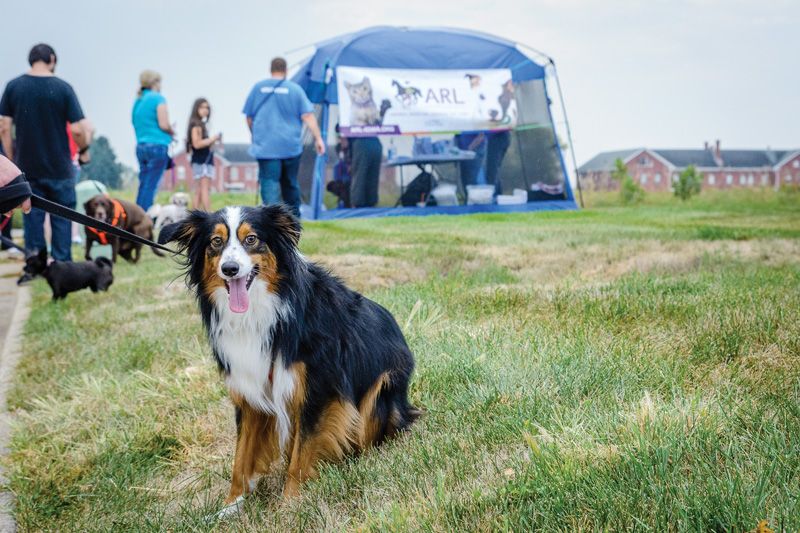
Before approaching an agency, think about how pet services could further its mission, advises Wolf. “When you frame it the right way, it’s going to appeal even to people who don’t care about pets and don’t see the value in them. It’s all about using the right narrative and speaking to the goals that they have.”
Many partnerships begin as informal agreements for organizations to cross-refer clients and collaborate on cases as the need arises. To form those connections, start by learning about the human service agencies in your area and letting them know about the types of help you can provide to their pet-owning clients, says Wyman. “It can be as simple as drafting a flier of the services you can offer and leaving it in social service offices.”
Wyman also encourages animal welfare professionals to network outside their field and “think how many services you could mash together.” CSHS belongs to the Minnesota Council of Nonprofits, and Wyman regularly speaks at networking lunches for the region’s human service nonprofits and attends monthly meetings of local social workers.
It can take time to build a network. But if you help one agency with a situation, “that’s showing a path,” Coffey says. “Then you make a contact, and … a true relationship begins.”
Since it’s easy to feel overwhelmed by the sheer amount of human and animal need, Coffey advises organizations to start small and tackle what they can. Not every program is going to “shift the planet,” she says. But small programs can be a steppingstone to major change.
In her early years at the Mayor’s Alliance, one of Coffey’s core projects focused on temporary housing for the pets of domestic violence victims. “The issue didn’t seem to register for domestic violence agencies,” she says. “Questions about pets were not being asked, and so the problem wasn’t documented.” Coffey worked to collect data to establish the need and advocated for a co-sheltering model so people could keep their pets. But the agencies weren’t ready to make that change. So Coffey developed a network of foster homes and boarding facilities to fill the need.
It wasn’t perfect, and the need always exceeded the capacity. “It was really crisis-based,” she says, remembering how she would sometimes have to leave her home in the middle of the night to pick up an animal. “There was never any planning. I would always get calls at the last minute from the social worker.”
But the program opened the door for ongoing discussions with staff at domestic violence agencies. After several years, one of the organizations began to realize that people were staying in danger because of their animals, she says. “All of the sudden this organization was willing to say ‘Let’s change.’” It took another year to work through the details and safety protocols, but now that organization has pet-friendly rooms in three of its domestic violence shelters.
To Coffey, it’s a sea change from 10 years ago, when she first approached the agencies and said she was interested in programs that would help their clients keep their pets.
“People would look at me with a blank stare,” she says. “Today it’s much different. Today I have domestic violence shelters calling and letting me know they can now take pets.”


